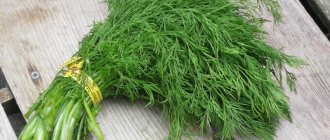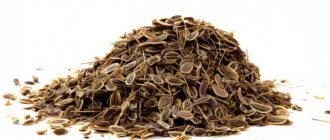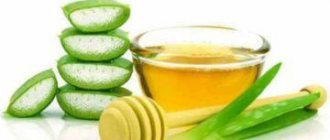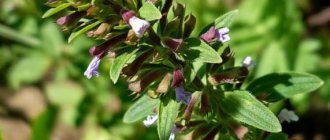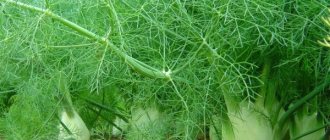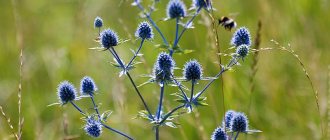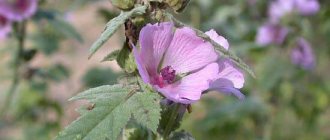Benefits and indications for taking dill seed decoction
Externally, dill fruits are small light or dark brown seeds formed on the umbels of the plant in the final stage of flowering. They are rich in riboflavin, thiamine, carotene, essential oils and other substances. Among the vitamins and minerals, it is worth noting a large number of acids - ascorbic, nicotinic, linoleic and others. As well as vitamins A, B and PP. Hence the useful properties:
- Removal of waste products - urine, bile, sweat. A decoction of dill seeds for newborns helps relieve abdominal cramps and remove gases from the intestines. Important! Nursing mothers will be able to combine the feeding process with adding a decoction of dill seeds to their diet, only after first determining the child’s tolerance to dill.
- Normalization of heart contractions. Pressure decreases under the influence of substances from the decoction.
- Improving gastrointestinal motility and intestinal peristalsis. Taking the decoction increases the secretion of the digestive glands and normalizes metabolic processes.
- Patients with poor appetite are advised to take a decoction.
We must not forget about contraindications. They are based on individual intolerance to the components and existing hypotension (low blood pressure).
Contraindications
Given the presence of such diverse beneficial and medicinal properties of dill, it does not have many contraindications. People with hypotension should not get carried away with dill, since when used frequently and in large quantities, it reduces blood pressure and has a vasodilating effect.
It is also not recommended to use the plant if there is atony of the smooth muscles of the gastrointestinal tract.
Sources:
Ivashin D.S., Katina Z.F. Medicinal plants of Ukraine.
L.G. Dudchenko, A.S. Kozyakov. Spicy-aromatic and spicy-flavoring plants.
S.Ya. Sokolov, I.P. Zamotaev. Handbook of medicinal plants.
V.V. Reshetnyak. Herbalist.
A.P. Popov. Medicinal plants in folk medicine.
Rim Akhmedov. Plants are your friends and foes.
Maznev N.I. Encyclopedia of medicinal plants.
A. Markova. Herbalist. Golden recipes of traditional medicine.
Infusion
Contrary to popular belief that all the miraculous qualities of dill seeds are revealed under the influence of boiling water, it should be said that the maximum temperature can change the strength of vitamins and minerals. Therefore, to prepare the infusion, just hot water is enough - 1 glass / 10 g. The container with the medicine is wrapped in a towel and left to “ripen” for 2 hours. The ready-made infusion will help in the following cases:
- Gastrointestinal problems - colic, flatulence. ½ glass, three times a day.
- Treatment of colds - cough, sore throat. The dose is similar.
- Angina and arrhythmia. The dose is similar.
- Diseases of the biliary and urinary system. 100 ml/up to 5 times a day.
- Increased lactation is achieved by taking 20 ml of infusion half an hour before feeding.
What are the benefits of dill?
Healers of the Middle Ages and modern doctors are unanimous in the opinion that the composition and properties of dill have a beneficial effect on the human body. But depending on the gender and age of a person, its effect is expressed differently.
For women
Thanks to its saturation with essential oils, dill increases libido in women, stabilizes their hormonal processes, and reduces pain during menstruation.
The spice ideally complements the diets so beloved by women - its rich chemical composition and low calorie content (only 40 kcal per 100 g of fresh herb) diversify the menu and give energy to the body.
Reference. Dill is used in cosmetic products. Cosmetics based on this plant reduces skin pigmentation, tones it and improves complexion, smoothes out fine wrinkles, relieves inflammation and even reduces the severity of cellulite.
For pregnant
During pregnancy, many experience morning sickness, sudden mood swings or nervous disorders, and constipation. Dill will relieve such conditions or, at a minimum, improve your well-being and reduce the manifestations of ailments.
Iron and vitamin B9 contained in the plant will relieve anemia during pregnancy, vitamin C will strengthen blood vessels, and essential oils will have a calming effect. In addition, greens have a mild laxative effect and do an excellent job of removing excess fluid, which will help cope with swelling.
Important. When pregnant women consume dill, some of the vitamins are supplied to the fetus. Folic and nicotinic acids are useful for the formation of the central nervous system, and phosphorus, potassium, calcium and other vitamins of the group are involved in the formation of its nervous and vascular systems.
However, it is important for pregnant women to follow the dosage: in large quantities, dill affects the smooth muscles of the uterus, causing contractions, and can trigger early labor. It is advisable to eat fresh herbs and take decoctions only after consulting a doctor.
For nursing
To extend breastfeeding time, it is recommended to regularly drink herbal teas with the addition of dill seeds or dill water. If such teas are not to your taste, try adding fresh herbs to main dishes and salads.
The spice increases milk production and improves its quality characteristics, saturating it with vitamins.
For the elderly
During menopause, hormonal changes in the body occur, which affects well-being - irritability appears, sweating increases, and hot flashes bother you. Dill seeds, taken as a course in the form of powder or decoction, will help completely or partially get rid of the symptoms of menopause.
In addition, the grass contains a lot of calcium, so regular consumption prevents the development of osteoporosis, which is important in adulthood. And dried, crushed greens will gently reduce blood pressure, which is becoming more and more common over the years.
For men
The use of the plant or its derivatives has a vasodilating effect and helps clear the walls of blood vessels from plaques in atherosclerosis. As a result, blood supply to all organs improves, including those located in the pelvis, which has a positive effect on erection. Caucasian centenarians, who traditionally have a lot of dill and other greens in their diet, are famous for their potency “until deep gray hairs”.
In addition, greens have a beneficial effect on the functioning of the genitourinary system, which reduces the risk of prostate inflammation.
For newborns and older children
A newborn's digestive system is not yet fully formed; they are often tormented by colic from accumulated gases. Dill water is an effective solution in such situations. It is administered with a pipette a few drops into the mouth or mixed with breast milk: up to 1 month, 10 drops three times a day, up to 4 months - 20 drops, from one year - a teaspoon.
Important. As a rule, colic does not appear until two weeks of age, but if this happens, you should consult your doctor about the advisability of using dill water and the permissible dosage.
If a nursing mother drinks dill water or eats fresh dill, then the baby’s gases pass painlessly and the risk of colic is reduced.
Older children also have problems with bloating. They should increase the dose of dill water: three-year-olds can be given 60 ml three times a day, and from the age of 6 they can switch to an adult dosage.
Reference. Dill water can be made in different ways: traditional - from water and essential oil of fennel (dill), prepared at home - from seeds or finely chopped herbs poured in boiling water. The homemade drug is prepared fresh for each appointment.
Decoction
Brewing dill as tea is wrong. To obtain the product, it is recommended to place a mixture of 1 glass of water and 10 grams of seed in a water bath and boil it for no more than 10 minutes. After cooling and straining, the product is ready for use.
- To relieve sore throat, barking cough and other bronchial problems. To enhance the effect, it is recommended to add St. John's wort herb to the decoction being prepared.
- Fennel added to the decoction after removing the container from the heat gives a sedative effect.
- For problems with the urinary system, for example, cystitis, the decoction of dill seeds should be more concentrated - the amount of dry component is doubled.
- Headaches, including migraines, are eliminated with a decoction of dill seeds in milk.
- The dose of use is almost the same for all cases - half a glass / 2-3 times a day until complete recovery.
Contraindications for use and possible harm
Due to its mineral composition, dill has a number of contraindications for use. But they do not apply to all people and not in all cases.
If the plant affects the body, unpleasant consequences may occur.
It is important to know when not to use a spice:
- Dill in large quantities is contraindicated for people with low blood pressure.
It can be consumed in small doses as a spicy salad dressing. If you drink infusions or decoctions, the consequences may be as follows: nausea, dizziness, weakness, temporary loss of vision.
- The spicy plant can cause an acute allergic reaction.
In this case, the consequences can be very different and cause great harm. It is better to first check the tolerance of dill - eat one sprig or bite into a seed.
- You shouldn’t just eat a lot of dill, as this can lead to simple indigestion or an imbalance in the acid balance.
Dill, like any other product, must be consumed in a certain proportion. In this case, you can use any part of the plant: leaves, stem, seeds, root.
As a result
Effective medications very often turn out to be a familiar herb that has fewer side effects compared to tablets and injections. They are also good for preventing existing diseases. It is recommended to consult with your doctor before use.
This article is for informational purposes only, please consult your doctor for details!
Chemical composition and characteristics of dill
Dill is an annual herb; there are no perennial species. The hollow dark green stem reaches up to 1.6 m in height, the leaves are pinnate, strongly dissected. In midsummer, one large flower appears at the top and often several smaller ones from a bed of upper leaves.
The inflorescence is umbellate, the flowers are small yellow. After pollination, seeds are set. At first they are greenish, then darken. The culture came from southern European countries and feels great in the middle zone.
Dill of any variety has a rich composition that provides medicinal properties:
- vitamins A, C, PP, group B;
- magnesium;
- iron;
- copper;
- potassium;
- phosphorus;
- selenium;
- phytoncides;
- amino acids.
Nutritional value per 100 g:
- proteins – 2 g;
- carbohydrates – 6 g;
- fats – 0.5 g.
Calorie content of dill per 100 grams:
- seeds – 304 kcal;
- greens – 40 kcal.
Types and varieties of spices
The family is represented by a single species - dill or fragrant dill. Many varieties of the crop have been developed. The most common:
- “Gribovsky” is early ripening, grows no more than 25 cm. The greens are fleshy, ready for cutting 40 days after germination.
- “Abundantly leafy” - medium ripe, reaches a height of 130 cm. It is distinguished by an abundance of greenery, the versatility of its purpose, and unpretentiousness.
- "Mammoth" is a compact bush that produces a good harvest. Suitable for cutting 40 days after germination. The leaves are large, grayish, covered with a waxy coating. Rarely attacked by pests.
- “Superducat” – plant height 80–120 cm, greens delicate in taste, aromatic. The leaf is elongated, with a bluish tint. The harvest is harvested 2 months after germination.
- “Leshy” – allows you to cut greens several times during the growing season. High commercial quality.
- "Ataman" - ready for cutting 2 months after sowing. Differs in versatility of application.
- “Russian Giant” is late-ripening, up to 1 m high, the leaves are large, dark green. They are located high above the garden bed, so they remain clean even in the rain.
View this publication on Instagram
Publication from Shop Semyon Lobnya (@magazinsemenalobnia) February 24, 2019 at 6:17 PST
In nature, there is no dill without umbrellas, because further propagation of the crop will be impossible. But varieties have been bred in which the formation of flowers occurs quite late, the greens remain tender longer. These include:
- “Alligator” is a modern mid-season variety, reaches a height of 1.5 m. The bush is powerful, fleshy greens with a strong odor and a bluish tint, ready for cutting in 40–45 days. Umbrellas can be cut off for preservation after 3.5–4 months.
- “Kibray” is very popular due to its fluffy greenery and low stem (up to 40 cm). Mid-season, disease resistant.
- “Salute” is high-yielding, allowing you to get 95 g per plant. Peduncles form very late, which makes it possible to cut the crop several times during the season.
- "Aurora" - early, the foliage is bright green, juicy, the rosette is lush. Resistant to diseases.
- "Amazon" - grows as a tall bush, produces a lot of fluffy bluish leaves.
The variety of varieties is confused by the popular name of common fennel - dill. These are 2 different plants, similar in foliage and inflorescence.
View this post on Instagram
Posted by Semena|Biotechnica (@biotechnica_semena) Sep 25, 2019 at 1:46 PDT
